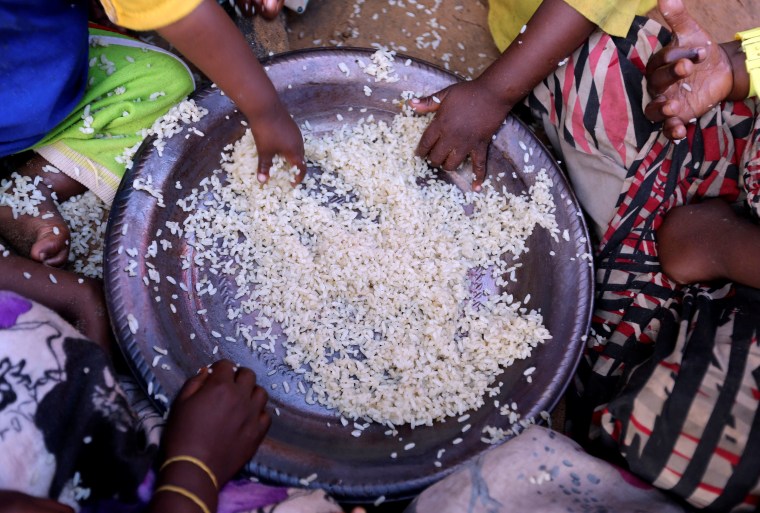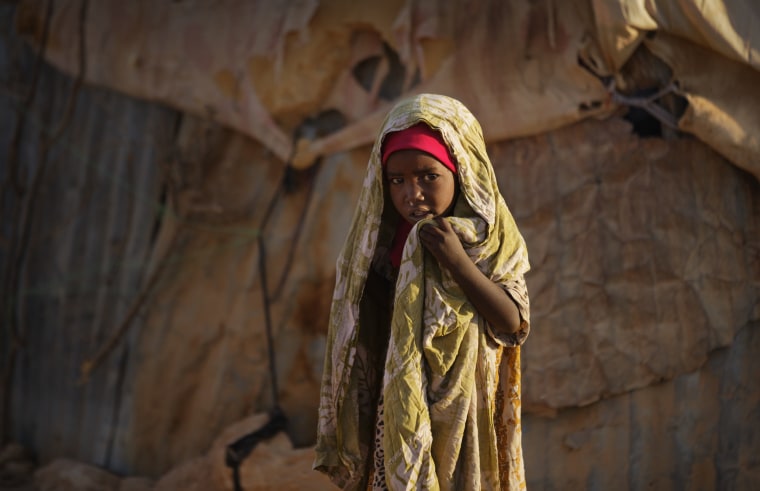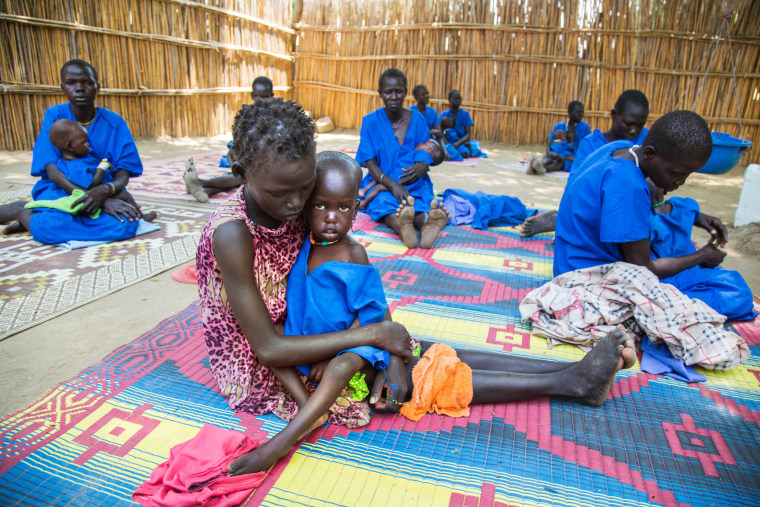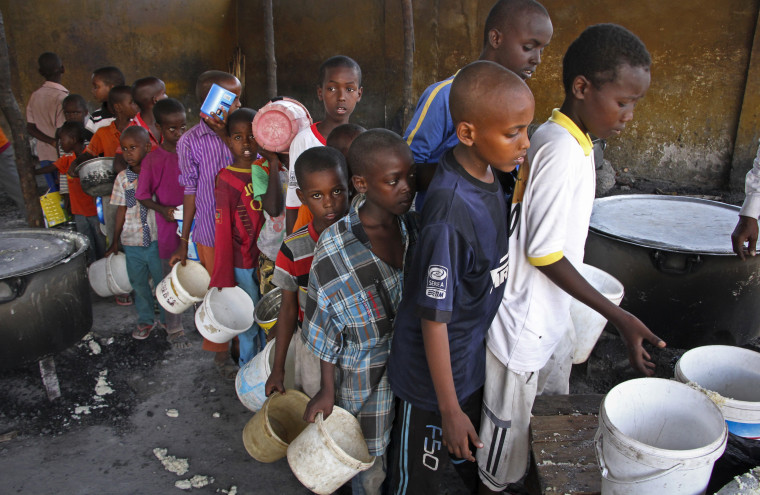Without enough food to go around, someone in the family must go hungry.
Mohamad and Abdille often give their rations to their seven young children.

But now there is not enough food for even them. Abdille watched as her 9-year-old son gave his younger siblings his portion with mixed feelings of sadness and pride.
"He is making a sacrifice," she told Reuters from Somalia's capital of Mogadishu. "I feel proud."
The family’s plight is far from unique.
A drought has left close to 3 million people severely food deprived across the country. The World Food Program estimates that 363,000 children aged under 5 are acutely malnourished, including 71,000 who are severely malnourished and face a high risk of disease and death.
Last week, Somali authorities announced the first tally of fatalities from the crisis, saying that 110 people had died from hunger in a 48-hour period in a single region.
On Friday, the United Nations said the world faced the largest humanitarian crisis since the organization was founded with starvation and famine threatening more than 20 million people in four countries — Somalia, as well as Yemen, South Sudan and northeast Nigeria.
In South Sudan, a civil war has prevented crops from being harvested and brought about economic collapse, prompting the United Nations to officially declare parts of the country as suffering from famine — the first time anywhere in the world since Somalia in 2011.
Officials warn that some 5.5 million people, nearly half the the country's population, will not have a reliable source of food by July. Around 100,000 people in South Sudan — the world's newest country — are at immediate risk of starvation.
In Yemen, which has been rocked by conflict in recent years, almost 18.8 million people are in need of humanitarian assistance. One in four of the country’s population are food insecure, and the rate of child malnutrition is one of the highest in the world, according to the U.N.
Last month, U.N. Secretary General Secretary-General Antonio Guterres called for “strong and urgent” action to tackle the situation. But the proliferation of multiple serious humanitarian crises is straining the international community’s ability to respond.

“People have asked me a lot about donor fatigue, but I think a better term for it is the overwhelming of the humanitarian system," Challiss McDonough, a senior regional communications officer for east Africa at the World Food Program, told NBC News. "The number of crises that the world is facing, and the number of people in need, and the severity of that need is essentially unprecedented, at least in my lifetime."
She added: “The humanitarian needs have grown so quickly and so enormously that they are outstripping the resources that are available to meet them.”
The thread that connects, and exacerbates each of the crises, is conflict and, in South Sudan, as in the other affected countries, violence presents a major obstacle to relief efforts.
“One of the biggest challenges is access — being able to reach those who need our assistance the most, and populations being able to reach us,” Elizabeth White, a policy adviser working with aid agency Oxfam in South Sudan, told NBC News.
GALLERY: Famine Grips the World's Newest Country
“In the areas where Oxfam and other agencies work that are experiencing emergency levels of hunger — one step away from famine — the humanitarian presence and that unfettered access has been cited as the reason that those areas are not in a state of famine. Holding back the hunger in those areas,” White said.
“The flip side of that is that the areas that are experiencing the worst levels of conflict, you’ve got the needs rising … and then we can’t get in to assist them because of the insecurity on the ground,” she added.

While aid agencies work diligently — to negotiate access to challenging areas, or to secure funding — for many people, the clock is ticking.
In South Sudan, aid workers warn that the looming rainy season will present further challenges to reaching vulnerable people. In Somalia, if the next rains fail as expected, the drought plaguing the country will become even more acute.
“In Somalia we’re looking to scale up very quickly to reach 2.5 million people in the next two months because we have a very short window of time to respond to stave off a famine,” McDonough said.
